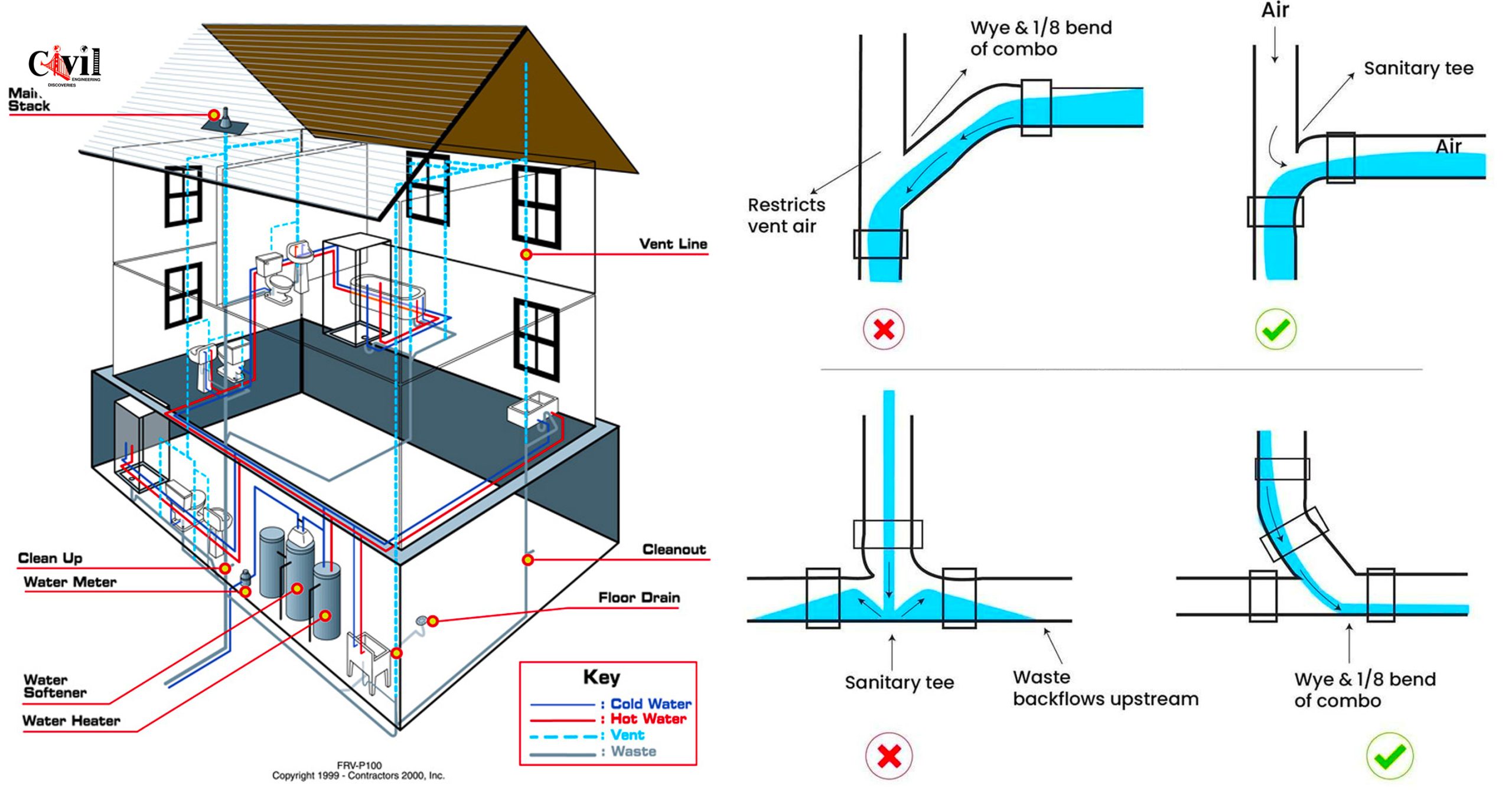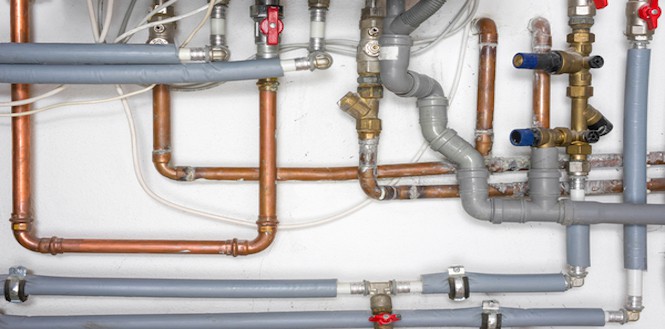The Basics of Your Property's Plumbing System Anatomy
The Basics of Your Property's Plumbing System Anatomy
Blog Article
Any individual may have their private piece of advice about Exploring Your Homes Plumbing Anatomy.

Comprehending how your home's plumbing system functions is necessary for every single property owner. From providing clean water for drinking, food preparation, and bathing to securely removing wastewater, a well-kept pipes system is essential for your household's health and convenience. In this comprehensive guide, we'll check out the intricate network that comprises your home's pipes and deal ideas on maintenance, upgrades, and managing common concerns.
Introduction
Your home's pipes system is more than simply a network of pipes; it's a complex system that guarantees you have accessibility to clean water and efficient wastewater removal. Recognizing its elements and just how they collaborate can aid you protect against costly fixings and guarantee everything runs smoothly.
Standard Components of a Pipes System
Pipes and Tubes
At the heart of your pipes system are the pipes and tubes that lug water throughout your home. These can be made from numerous materials such as copper, PVC, or PEX, each with its benefits in regards to resilience and cost-effectiveness.
Components: Sinks, Toilets, Showers, etc.
Components like sinks, toilets, showers, and tubs are where water is made use of in your home. Comprehending just how these fixtures link to the pipes system aids in diagnosing issues and intending upgrades.
Valves and Shut-off Factors
Shutoffs regulate the flow of water in your pipes system. Shut-off shutoffs are essential throughout emergencies or when you need to make repair work, enabling you to separate parts of the system without interfering with water circulation to the whole house.
Supply Of Water System
Key Water Line
The primary water line attaches your home to the municipal supply of water or a personal well. It's where water enters your home and is distributed to different fixtures.
Water Meter and Pressure Regulator
The water meter measures your water usage, while a pressure regulator guarantees that water streams at a risk-free pressure throughout your home's plumbing system, preventing damage to pipelines and fixtures.
Cold Water vs. Warm water Lines
Recognizing the distinction between cold water lines, which supply water directly from the main, and hot water lines, which bring warmed water from the hot water heater, aids in troubleshooting and preparing for upgrades.
Water drainage System
Drain Pipes Water Lines and Traps
Drain pipes bring wastewater far from sinks, showers, and commodes to the sewer or septic tank. Catches prevent sewage system gases from entering your home and also trap debris that could cause clogs.
Ventilation Pipes
Air flow pipelines enable air into the drainage system, preventing suction that can slow down drainage and cause catches to vacant. Appropriate ventilation is essential for keeping the stability of your plumbing system.
Value of Appropriate Water Drainage
Guaranteeing proper drain avoids backups and water damages. On a regular basis cleaning up drains and keeping catches can avoid costly fixings and extend the life of your pipes system.
Water Heating Unit
Sorts Of Water Heaters
Water heaters can be tankless or standard tank-style. Tankless heaters warm water as needed, while storage tanks store warmed water for instant usage.
Upgrading Your Pipes System
Factors for Updating
Upgrading to water-efficient components or changing old pipes can boost water high quality, lower water bills, and boost the worth of your home.
Modern Pipes Technologies and Their Benefits
Discover innovations like smart leakage detectors, water-saving toilets, and energy-efficient hot water heater that can save cash and reduce environmental influence.
Expense Factors To Consider and ROI
Determine the ahead of time costs versus lasting savings when thinking about plumbing upgrades. Many upgrades spend for themselves through lowered utility bills and less repair work.
Just How Water Heaters Connect to the Pipes System
Comprehending just how hot water heater connect to both the cold water supply and warm water distribution lines helps in detecting concerns like insufficient warm water or leaks.
Upkeep Tips for Water Heaters
Routinely purging your water heater to get rid of sediment, checking the temperature level settings, and checking for leaks can prolong its lifespan and enhance power efficiency.
Typical Pipes Issues
Leaks and Their Reasons
Leakages can take place due to aging pipelines, loosened installations, or high water stress. Dealing with leakages without delay protects against water damage and mold development.
Obstructions and Clogs
Obstructions in drains and bathrooms are typically caused by flushing non-flushable products or a build-up of oil and hair. Making use of drainpipe displays and being mindful of what goes down your drains can stop obstructions.
Indicators of Plumbing Troubles to Expect
Low tide stress, slow-moving drains pipes, foul odors, or unusually high water bills are signs of potential plumbing troubles that should be dealt with quickly.
Pipes Upkeep Tips
Routine Examinations and Checks
Set up yearly pipes evaluations to catch problems early. Try to find indications of leaks, corrosion, or mineral build-up in taps and showerheads.
Do It Yourself Upkeep Tasks
Easy tasks like cleaning faucet aerators, checking for toilet leaks using color tablets, or insulating exposed pipes in cold climates can prevent major plumbing problems.
When to Call an Expert Plumbing
Know when a pipes concern needs specialist expertise. Attempting intricate repairs without correct understanding can cause more damage and greater repair service prices.
Tips for Lowering Water Usage
Straightforward routines like dealing with leakages without delay, taking much shorter showers, and running complete tons of washing and meals can save water and lower your utility bills.
Eco-Friendly Pipes Options
Take into consideration sustainable plumbing materials like bamboo for floor covering, which is durable and eco-friendly, or recycled glass for countertops.
Emergency situation Readiness
Actions to Take During a Plumbing Emergency situation
Know where your shut-off shutoffs lie and just how to switch off the water in case of a ruptured pipe or significant leakage.
Value of Having Emergency Situation Get In Touches With Handy
Maintain get in touch with info for local plumbing professionals or emergency situation services readily offered for fast response throughout a plumbing crisis.
Ecological Effect and Conservation
Water-Saving Components and Home Appliances
Installing low-flow taps, showerheads, and bathrooms can significantly lower water use without sacrificing performance.
Do It Yourself Emergency Situation Fixes (When Appropriate).
Temporary repairs like using air duct tape to spot a leaking pipeline or placing a pail under a trickling tap can reduce damage till an expert plumbing professional shows up.
Verdict.
Comprehending the makeup of your home's plumbing system equips you to preserve it properly, saving money and time on repairs. By following normal maintenance routines and remaining educated about contemporary pipes innovations, you can guarantee your plumbing system runs efficiently for years to come.
Exploring Your Homes Plumbing Anatomy
Water Supply System
Main Water Line: This is where water enters your home from the municipal supply or a private well. Water Meter: Typically located near where the main water line enters the property, it measures the amount of water used. Shutoff Valve: It s crucial to know where this is in case of emergencies. It allows you to turn off the water supply to the entire house. Pipes and Fittings: These distribute water throughout your home. Materials can include copper, PVC, or PEX. Drain-Waste-Vent (DWV) System
Drains: Located in sinks, showers, and tubs, these carry wastewater away. Traps: U-shaped pipes under sinks that hold standing water, blocking sewer gases from entering the home. Vents: Pipes that lead from the DWV system to the outside, preventing vacuum formation and allowing gases to escape. Sewer Line: Carries all wastewater from the home to the municipal sewer system or a septic tank. Fixtures and Appliances
Sinks, Toilets, and Showers Dishwashers and Washing Machines Water Heaters Maintenance Tips
Regularly check for leaks in exposed pipes and around fixtures. Inspect the water heater annually for signs of wear. Clean drains and traps to prevent clogs and odors. Know how to shut off water to individual fixtures. When to Call a Professional
Major leaks or burst pipes Installation of new pipes or fixtures Septic tank issues Remodeling projects that involve plumbing changes Conclusion
Understanding the anatomy of your home's plumbing is key to maintaining a functional and efficient system. Regular checks and knowing when to call in the experts can save you time, money, and stress.
https://www.mavyn.com/blog/exploring-your-homes-plumbing-anatomy

I came across that piece of writing about Exploring Your Homes Plumbing Anatomy when surfing the internet. Appreciated our review? Please quickly share it. Help someone else check it out. We recognize the value of your readership.
Call Today Report this page